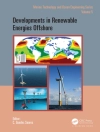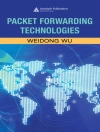Maintaining a stable level of power quality in the distribution network is a growing challenge due to increased use of power electronics converters in domestic, commercial and industrial sectors. Power quality deterioration is manifested in increased losses; poor utilization of distribution systems; mal-operation of sensitive equipment and disturbances to nearby consumers, protective devices, and communication systems. However, as the energy-saving benefits will result in increased AC power processed through power electronics converters, there is a compelling need for improved understanding of mitigation techniques for power quality problems.
This timely book comprehensively identifies, classifies, analyses and quantifies all associated power quality problems, including the direct integration of renewable energy sources in the distribution system, and systematically delivers mitigation techniques to overcome these problems.
Key features:
* Emphasis on in-depth learning of the latest topics in power quality extensively illustrated with waveforms and phasor diagrams.
* Essential theory supported by solved numerical examples, review questions, and unsolved numerical problems to reinforce understanding.
* Companion website contains solutions to unsolved numerical problems, providing hands-on experience.
Senior undergraduate and graduate electrical engineering students and instructors will find this an invaluable resource for education in the field of power quality. It will also support continuing professional development for practicing engineers in distribution and transmission system operators.
Inhoudsopgave
1.1 Introduction
1.2 State of Art on Power Quality
1.3 Classification of Power Quality Problems
1.4 Causes of Power Quality Problems
1.5 Effects of Power Quality Problems on Users
1.6 Classification of Mitigation Techniques of Power Quality Problems
1.7 Literature and Resource Material on Power Quality
1.8 Summary
1.9 Review Questions
1.10 References
2.1 Introduction
2.2 State of the Art on Power Quality Standards and Monitoring
2.3 Power Quality Terminologies
2.4 Power Quality Definitions
2.5 Power Quality Standards
2.6 Power Quality Monitoring
2.7 Numerical Examples
2.8 Summary
2.9 Review Questions
2.10 Numerical Problems
2.11 Computer Simulation Based Problems
2.12 References
3.1 Introduction
3.2 State of the Art on Passive Shunt and Series Compensators
3.3 Classification of Passive Shunt and Series Compensators
3.4 Principle of Operation of Passive Shunt and Series Compensators
3.5 Analysis and Design of Passive Shunt and Series Compensators
3.6 Modelling, Simulation and Performance of Passive Shunt and Series Compensators
3.7 Numerical Examples
3.8 Summary
3.9 Review Questions
3.10 Numerical Problems
3.11 Computer Simulation Based Problems
3.12 References
4.1 Introduction
4.2 State of the Art on DSTATCOM
4.3 Classification of DSTATCOM
4.4 Principle of Operation and Control of DSTATCOM
4.5 Analysis and Design of DSTATCOM
4.6 Modeling, Simulation and Performance of DSTATCOM
4.7 Numerical Examples
4.8 Summary
4.9 Review Questions
4.10 Numerical Problems
4.11 Computer Simulation Based Problems
4.12 References
5.1 Introduction
5.2 State of Art on Active Series Compensators
5.3 Classification of Active Series Compensators
5.4 Principle of Operation and Control of Active Series Compensators
5.5 Analysis and Design of Active Series Compensators
5.6 Modeling, Simulation and Performance of Active Series Compensators
5.7 Numerical Examples
5.8 Summary
5.9 Review Questions
5.10 Numerical Problems
5.11 Computer Simulation Based Problems
5.12 References
6.1 Introduction
6.2 State of Art on Unified Power Quality Compensators
6.3 Classification of Unified Power Quality Compensators
6.4 Principle of Operation and Control of Unified Power Quality Compensators
6.5 Analysis and Design of Unified Power Quality Compensators
6.6 Modeling, Simulation and Performance of Unified Power Quality Compensators
6.7 Numerical Examples
6.8 Summary
6.9 Review Questions
6.10 Numerical Problems
6.11 Computer Simulation Based Problems
6.12 References
7.1 Introduction
7.2 State of Art of Nonlinear Loads
7.3 Classification of Nonlinear Loads
7.4 Power Quality Problems Caused by Nonlinear Loads
7.5 Analysis of Nonlinear Loads
7.6 Modeling, Simulation and Performance of Nonlinear Loads
7.7 Numerical Examples
7.8 Summary
7.9 Review Questions
7.10 Numerical Problems
7.11 Computer Simulation Based Problems
7.12 References
8.1 Introduction
8.2 State of Art on Passive Power Filters
8.3 Classification of Passive Power Filters
8.4 Principle of Operation of Passive Power Filters
8.5 Analysis and Design of Passive Power Filters
8.6 Modeling, Simulation and Performance of Passive Power Filters
8.7 Limitations of Passive Filters
8.8 Parallel Resonance of Passive Filters with Supply System
8.9 Numerical Examples
8.10 Summary
8.11 Review Questions
8.12 Numerical Problems
8.13 Computer Simulation Based Problems
8.14 References
9.1 Introduction
9.2 State of Art on Shunt Active Power Filters
9.3 Classification of Shunt Active Power Filters
9.4 Principle of Operation and Control of Shunt Active Power Filters
9.5 Analysis and Design of Shunt Active Power Filters
9.6 Modeling, Simulation and Performance of Shunt Active Power Filters
9.7 Numerical Examples
9.8 Summary
9.9 Review Questions
9.10 Numerical Problems
9.11 Computer Simulation Based Problems
9.12 References
10.1 Introduction
10.2 State of Art on Series Active Power Filters
10.3 Classification of Series Active Power Filters
10.4 Principle of Operation and Control of Series Active Power Filters
10.5 Analysis and Design of Series Active Power Filters
10.6 Modeling, Simulation and Performance of Series Active Power Filters
10.7 Numerical Examples
10.8 Summary
10.9 Review Questions
10.10 Numerical Problems
10.11 Computer Simulation Based Problems
10.12 References
11.1 Introduction
11.2 State of Art on Hybrid Power Filters
11.3 Classification of Hybrid Power Filters
11.4 Principle of Operation and Control of Hybrid Power Filters
11.5 Analysis and Design of Hybrid Power Filters
11.6 Modeling, Simulation and Performance of Hybrid Power Filters
11.7 Numerical Examples
11.8 Summary
11.9 Review Questions
11.10 Numerical Problems
11.11 Computer Simulation Based Problems
11.12 References
Over de auteur
Professor Bhim Singh has worked at the IIT Delhi
Department of Electrical Engineering since 1997. He has 30
years’ experience in research, consulting and teaching, has
organized more than 40 short term courses and workshops, and has
delivered more than 100 invited specialized lectures. He has
chaired many international and national conferences, including the
IEEE International Conferences on Power Electronics, Drives and
Energy Systems in 2006. Professor Singh holds one US and one Indian
Patent and has filed nine Indian patents. He is a Fellow of many
engineering institutions including the Indian National Academy of
Engineering and the Indian Academy of Sciences.
Professor Ambrish Chandra became a Professor in
Electrical Engineering Department at ETS in 1999. His main research
interest areas are: power quality, active filters, static reactive
power compensation, FACTS and control & integration of
renewable energy resources. Professor Chandra is a Fellow of many
engineering institutions including IEEE, IET (UK), IE (India) as
well as a Life Member of the Indian Society for Technical Education
(ISTE).
Professor Kamal Al-Haddad has been a Professor within
ETS’ Electrical Engineering Department since 1990. His
research interest areas include: high efficient static power
converters, harmonics & reactive power control using hybrid
filters, switch mode & resonant converters, the development of
prototypes for various industrial applications in electric
traction, and power supply for drives & telecommunication.
Professor Al-Haddad is an IEEE Fellow, a Canadian Academy of
Engineering Fellow and life member of the Circle of Excellence of
the University of Quebec. Presently he is IEEE Industrial
Electronics society President Elect.












